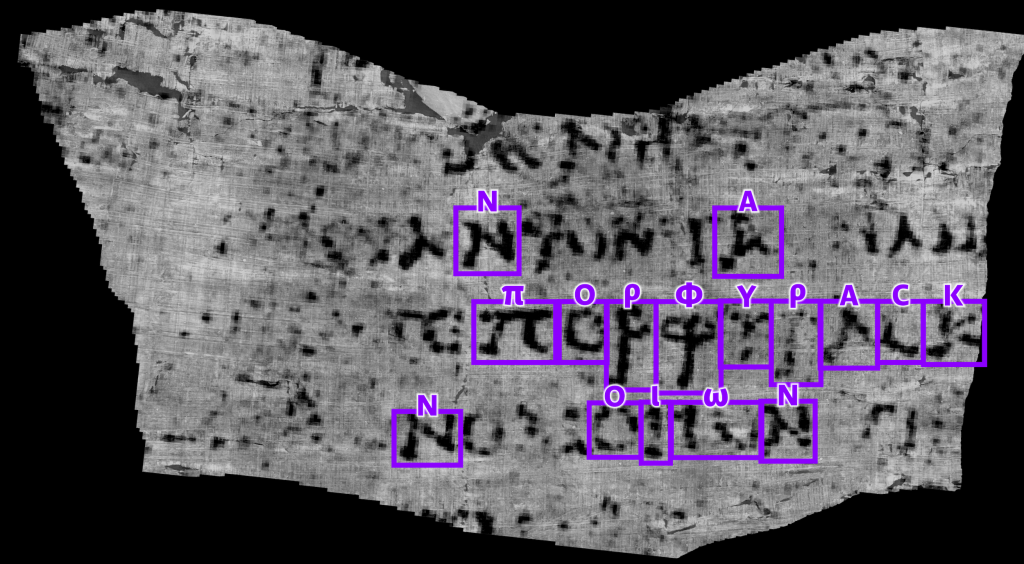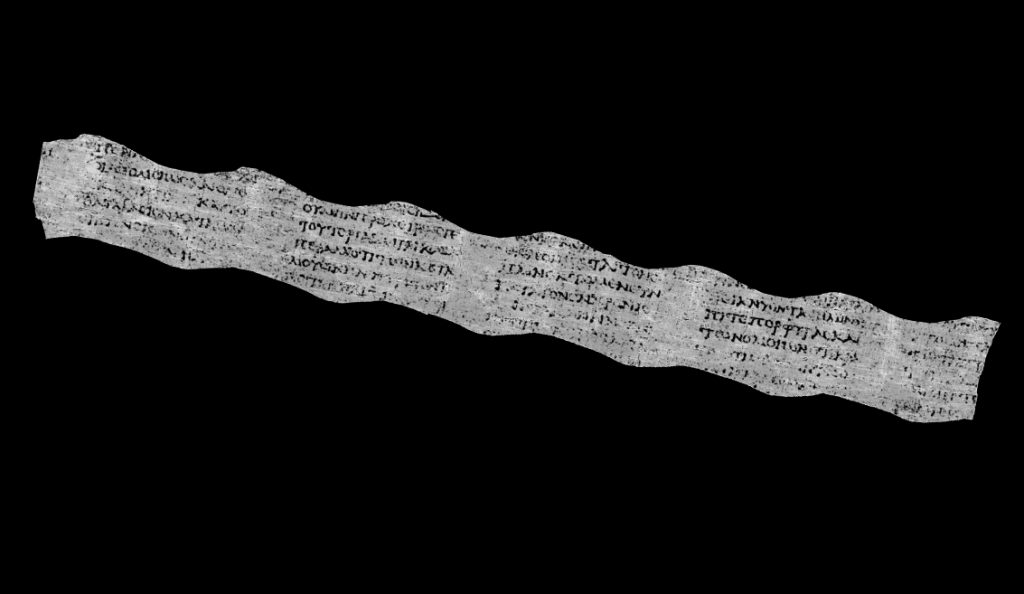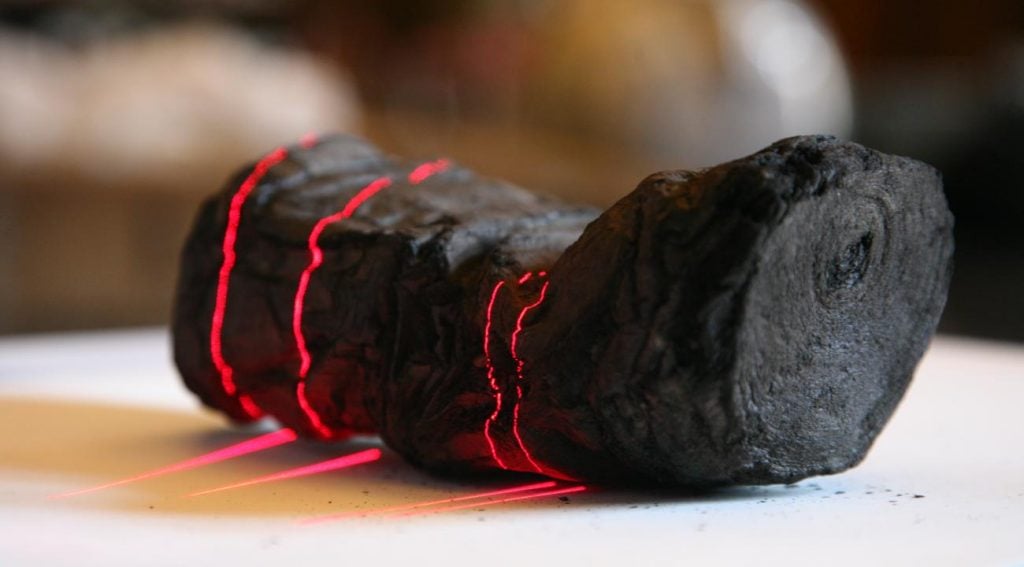Archaeology & History
A 21-Year-Old Student Has Deciphered the First Word from the Herculaneum Scrolls, Charred in the Eruption of Mount Vesuvius
Computer scientist Luke Farritor won $40,000 as part of a competition to decode the scrolls.

Computer scientist Luke Farritor won $40,000 as part of a competition to decode the scrolls.

Richard Whiddington

It’s a peculiar historical quirk that the eruption of Mount Vesuvius in 79 CE which destroyed the towns of Pompeii and Herculaneum also created one of the most detailed portraits of the ancient world for posterity.
That picture is set to become richer. Researchers have announced that the first word has been deciphered from the Herculaneum scrolls, a collection of 800 carbonized texts found in the library of a grand villa believed to have been the property of Julius Caesar’s father-in-law. Since their discovery in the 1700s, the Herculaneum scrolls have remained a tantalizing enigma for archaeologists and classicists alike, believed to contain lost ancient texts, yet far too fragile to be unwrapped.
The first word to emerge from the scrolls is “porphyras,” ancient Greek for purple, and its decoder is Luke Farritor, a 21-year-old computer science student from the University of Nebraska-Lincoln.
Farritor was taking part in the Vesuvius Challenge, a machine learning and computer vision competition backed by Silicon Valley money with the goal of accelerating the deciphering of the 2,000-year-old texts. His reward? $40,000.

Multiple characters and lines of text have been extracted by Vesuvius Challenge contestant Luke Farritor. Image: courtesy Vesuvius Challenge.
Back in March, Brent Seales, a University of Kentucky computer scientist who has been working on the Herculaneum scrolls for two decades, released thousands of 3D x-ray images of two scrolls and three papyrus fragments. After scanning, Seales straightened out the scrolls digitally, a process he calls “virtual unwrapping.”
In 2016, Seales used the technique to decipher the En-Gedi Scroll, a third-century CE parchment that is also carbonized — it turned out to contain legible sections of Leviticus. Unlike the Hebrew parchment which used metallic ink, the Herculaneum papyrus is marked with a charcoal ink, meaning the scan reveals little to the naked eye.

Herculaneum scroll with laser lines being scanned at Institut de France by Brent Seales and his team. Image: courtesy EduceLab.
This required using A.I. to try to find ways in which the ink had affected the papyrus. The first break came when Casey Handmer, a contestant, found ink as a cracked texture on one of the scans and shared it in a blog post. Farritor then trained a machine learning model on Handmer’s pattern, which revealed first ink strokes and then letters which were used to further improve the model until a whole word was identified.
“Overcoming damage incurred during a 2,000-year span is no small challenge. But that’s what researchers do — together, we conquer the seemingly impossible,” Seales said. “The Vesuvius challenge allowed us to enlist more than a thousand research teams to work on a problem that would normally have about five people working on it.”
Now comes the race to claim Vesuvius Challenge’s grand prize of $700,000 for identifying four separate passages of at least 140 characters. An estimated 1,500 people are believed to be working on the scrolls.
Beyond the pecuniary reward, deciphering the excavated scrolls would have a dramatic impact on classical scholarship. As a learned Roman aristocrat, Lucius Calpurnius Piso Caesoninus, the villa’s probable owner, would have had a library comprised of major Latin and Greek texts. Papyrus decays easily and the overwhelming majority of Greek and Roman texts are known to have been lost. This means the Herculaneum Scrolls offer the possibility of greatly expanding the ancient canon.
“The most unique feature of the Library of Herculaneum is that the preserved texts are entirely unknown from other sources,” said Federica Nicolardi, a papyrologist at the University of Naples Federico II. “The advance gives us the possibility to recover the texts of the entire scrolls.”
More Trending Stories:
Four ‘Excellently Preserved’ Ancient Roman Swords Have Been Found in the Judean Desert